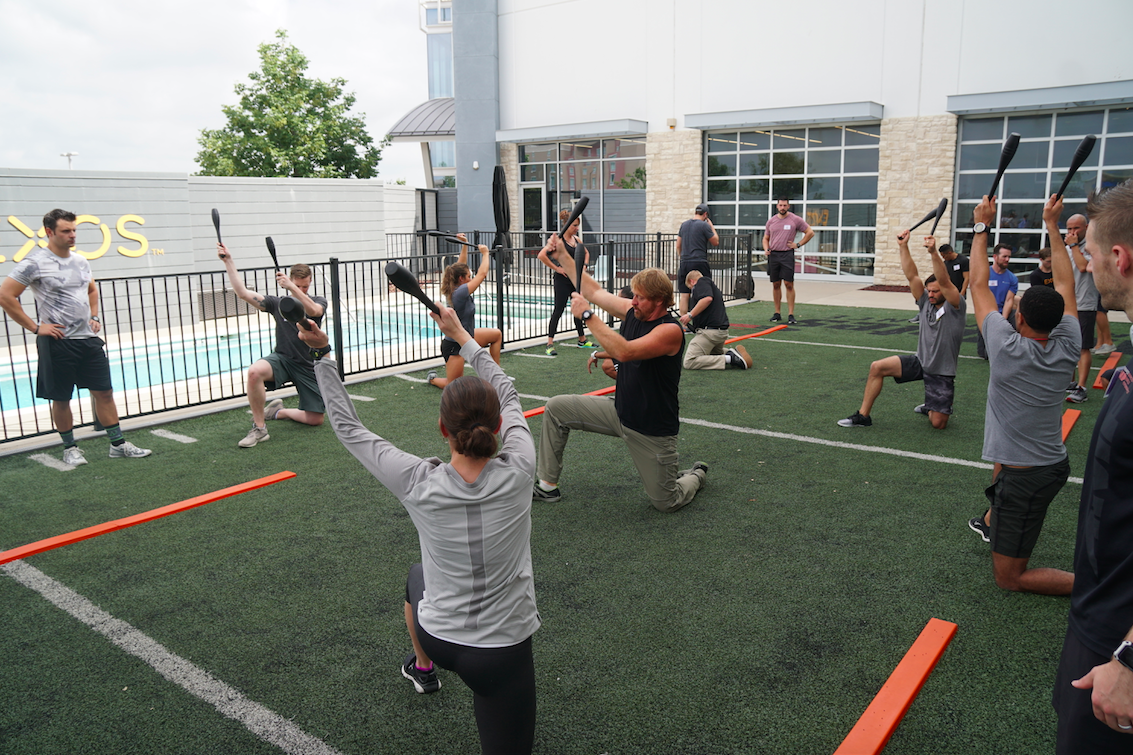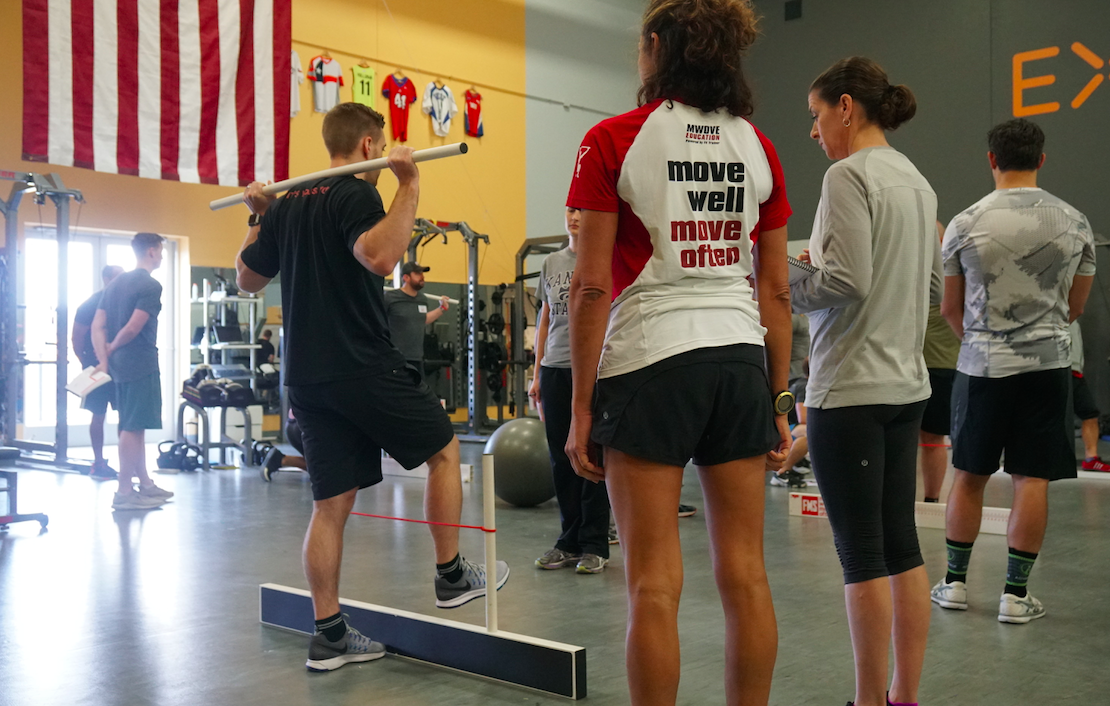Why Am I Injured?
Posted by FMS

One of the most frequent questions we get is how to implement the FMS within Group Exercise programming. Personal Training is “easy” to implement the FMS because it just becomes part of what you do with the individual. But within Group Exercise programming it can be more challenging. So, let’s break this down into some Real and Ideal situations.
Group Exercise or Class programming is how many people choose to “get fit”. Whether they are decided on for cost or time, classes provide community and interaction with a group and the fun of being challenged by the instructor. They have been a top fitness “trend” for many years. Studios and gyms provide tens to dozens of classes a week. These class programs break down into two or three situations for implementing the FMS:
In the Ideal situation, the Studio or Gym has implemented a way to pre-screen and prequalify individuals for entering their class program. Typically, this is offered as a one hour session where there is the opportunity to perform the FMS screen, provide correctives if needed and teach the basic exercise techniques that will be used in class. As a Kettlebell instructor, for example, I did not want the “unknown” attendee walking into my class. I wanted the opportunity to teach them the basic techniques and know where I needed to modify exercise selection for that individual. This is the ideal set-up in my opinion since people enter into classes with a known movement screen, and a basic understanding of the exercises used in class.
The mixed situation between Real and Ideal is a Group Exercise situation where the class is attended by a group of regulars. Not prequalified for attending but with regular attendance the instructor can handle the screening and teaching in a couple of different ways. The FMS can be performed over the course of a few sessions or weeks. On day one might mean performing the ASLR and SM at the beginning of class. Day two could be the RS and TSPU. Day Three gets the DS, HS and ILL completed. If using the modified screen you could go with: day one = ASLR, SM, day two = LMCS with ankle clearing, Day three = DS. Over the course of a week or two of classes the instructor takes a few minutes at the beginning of class to collect the screen information. Once the data is complete, the instructor(s) can implement “protect”, corrective strategies and exercise programming decisions based on the FMS. Weak links for individuals can be quickly re-screened before class and even painful patterns can be avoided with a recommendation for referral to a Healthcare provider. BTW - Sports teams can be screened in a similar manner when a single coach is trying to work with a large group.

Potpourri is the most Real situation and means a mixed bag of attendees are coming to class each time. No prequalifying and a mix of experience is walking into class each time. A class of 10 might break down into 2-3 brand new people, 3-5 “regulars”, and 3-4 “occasional”. This provides a very challenging situation for the instructor who needs to “screen” and teach the new people, challenge the “regulars” and bring the “occasional” folks up to speed on where the class has progressed since they were last in attendance. Fun!
This is where a bit of creativity and a sharp eye will be key. Group warm-ups are your friend here and an instructor can learn a lot about a group during a well designed movement prep/warm-up. If the movement prep covers key areas for mobility and motor control for that day then the instructor will be able to adjust exercise selection based on what they observe. At a minimum new people should be met and have a brief history taken and check for any current medical or injury situations. Performing the Clearance Tests from the FMS as an additional check for pain may also be a good idea. If the instructor finds pain or sees an individual struggling to perform either the group warm-up or the exercises, they can touch base with that person and recommend an individual session (of some sort – even if it is meeting early before class or staying a few minutes after).
A Quick Note: Protect before you Correct
In Group Exercise situations, Protect before you Correct from Principle 2 becomes very important. People come into class to “workout” so putting them “on the bench” is rarely an option. What can be done with a knowledge of the individuals FMS is the exercise selection for that class can be tailored to Protect where needed with known regressions and progressions for the exercises performed for that day. I have had 70+year old Grandmothers in class beside 24-year old athletes. One of them was performing Kettlebell deadlifts while the other was working on the KB Swing. Both had a great class and was performing the drill they needed while never missing a beat during class. Because no one wants to be “singled out” as not being able to participate.
The most important thing is to stay true to the principles. Establishing Move Well before the stress of class asks them to Move Often. Protect before you Correct and Correct before you Develop. Have your progressions and regressions solid so “on the fly” adjustments can be made. And finally have systems in place that enforce your Principles. An SOP integrated into the “culture” of the Group Exercise program will go a long way toward making all of this smooth and effective. Try these strategies to help reduce the barrier to implementing the FMS within a Group Exercise situation whether it is ideal, real or mixed.
Posted by FMS
Posted by FMS
So, this means I will took all my data from the first 3 Days into my FMS-Scoreing Sheet? For me, that means, I have to write all Data down? On the Warm up/Movement Prep I can implement some Clearing Tests and also the "Fundamenal Tests" for sure. But HOW I collegt all the Data, so that I know for sure what I have to do with the Individual Person? By all this is a great Setup for Group Exercises... Thanx for this great Article and Ideas -Sascha
Does anyone have any experience in doing this I could chat with? I am a Kinesiologist looking at introducing FMS into some local workplaces and would love some input on how to implement it successfully!